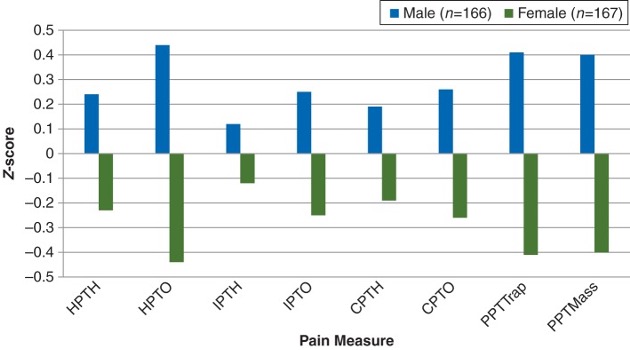
Do you understand our sensation of pain? Before everything, the pain I’m talking about today is physical, not some types of emotional pain you feel after a huge fight or a breakup. Speaking of physical pain, we usually tend to relate them to injuries – well, that’s partially correct. Let’s try and understand pain from a neurological perspective.
First, meet nociceptors. An alternative name of them is “pain receptors” because their primary responsibility is to respond to potentially damaging stimuli (for instance, when you accidentally step on a nail with your bare feet). Once these nociceptors notice the damaging stimuli, they immediately send signals to report this potential danger to your brain. The message is first sent to the cross-section of your spinal cord and then gets projected to your brain; thus, your brain can interpret the signal and figure out that something has gone wrong. But what exactly happens in the brain? That question leads us to the introduction of the thalamus and the sensory cortex. Thalamus is a small structure within the brain located just above the brain stem between the cerebral cortex and the midbrain. In our pain circuit, it’s responsible for generating the sensation of pain. However, what the thalamus cannot do is to locate the precise location of the damage. That would be our sensory cortex’s job. This brief explanation of the pain circuit helps explain why you would feel pain when you are hurt.
By the time that I first learned this, another question popped out in my mind: how would our brain determine when we feel pain and when we do not? Our visual system functions when it receives light stimulus, but what triggers our pain circuit? There is, actually, a theory that helps answer my question, and it is called the Gate Control Theory. This theory is first proposed by Ronald Melzack and Patrick Wall in 1965, and its fundamental assumption is that there is a neurological “gate” in our spinal cord that either blocks the pain signals or permits them to pass and enter our brain. How would that magical thing happen? In fact, there are two types of sensory fibers in our spinal cord: large-diameter fibers and small-diameter fibers. They possess different transmission speeds. When there is more activity in small-diameter fibers, the gate is opened; therefore, the pain signals are permitted to pass into the brain, triggering our sensation of pain. On the other hand, if there is more activity in the large-diameter fibers, the gate closes and blocks the pain signals and feeling.
When talking about different types of sensations, pain would probably be the last one that people would like to have. Admittedly, being burned by a candle flame, get bitten by a dog, or hurt by touching a cactus…we won’t generally consider these as enjoyable memories. However, pain is extremely important for our survival, and I believe that at least some of you would agree with my point. If you have different thoughts, then let’s alter to a different perspective – try to imagine what your life would be like if you can’t feel any pain. This disorder has a name: congenital insensitivity to pain with anhidrosis (CIPA). It’s a rare disease in which the afflicted person feels no pain due to a genetic mutation that disrupts the development of the small-diameter nerve fibers. Unfortunately, people with this rare disease usually die by early adulthood.
However, just because we all have similar pain systems, does that mean we all have the same sensitivity to pain? I first noticed this difference when I was in Grade 7. I noticed that boys in the class tend to feel less level of pain when receiving vaccines comparing to girls. I originally thought that it was because boys are probably taught to be brave so they conceal their feelings, but lately, I surprisingly find out that in fact, there is increasing evidence for sex differences in pain sensitivity and analgesic response. In a recent study(Bartley and Fillingim 2013), researchers show that clinical pain, both acute and chronic, and experimental pain models all show sex differences. The following figure comes from this study, showing Z-scores for multiple pain measures in a sample of healthy young adults (166 female, 167 male). Z-scores were computed such that the mean for the entire sample is zero (meaning there is no difference in pain sensitivity between males and females). Higher Z-scores reflect lower pain sensitivity, and lower Z-scores reflect higher pain sensitivity. As demonstrated, sex differences were statistically significant for all pain measures (P <0.05).

Let’s end this blog with something less scientific: let’s talk about art! Meet photographer Justin J. Wee and his series of photographs “How I Hurt.” Inspired by his own experiences suffering from chronic back pain and also his friends’ experiences, Justin aims to visually capture the dimensions of how people feel when they are in pain. For example, this following photograph is one of Justin’s works, “CLUSTER HEADACHES.” When he described this work, he says, “… It starts just behind my eye, in my temple, and within a few minutes, the pain feels both piercing and explosive. It radiates around my skull and down my neck.” It’s undeniable that it’s just amazing how he translates this delicate description to a photograph! (For more of Justin’s works, you can visit the website in reference links.)

References
- Myers, D. G., & DeWall, C. N. 2014. Sensation and Perception. Myers’ psychology for AP (Second ed., p. 204). [cited 2021 Apr 28].
- Mandal, Ananya. 2021. What is the Thalamus? News Medical. [cited 2021 Apr 28]. Available from https://www.news-medical.net/health/What-is-the-Thalamus.aspx#:~:text=The%20thalamus%20is%20a%20small,signals%20to%20the%20cerebral%20cortex.
- Bartley, E. J., & Fillingim, R. B. 2013. Sex differences in pain: a brief review of clinical and experimental findings. British journal of anaesthesia, 111(1), 52–58. [cited 2021 Apr 28]. Available from https://doi.org/10.1093/bja/aet127
- Villamizar, Laura. 2019. What Hurting Looks Like: Photographer Translates Pain Into Visceral Still Lives. [cited 2021 Apr 28]. Available from https://www.npr.org/sections/pictureshow/2019/09/09/757105014/what-hurting-looks-like-photographer-translates-pain-into-visceral-still-life